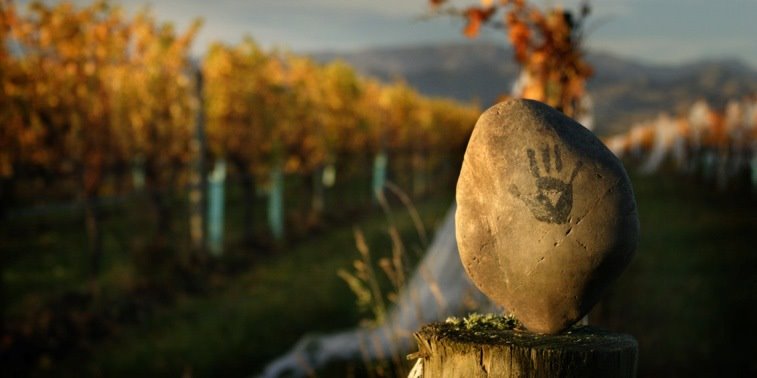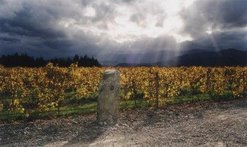Olive Harvest 2010
 Here Colin is harvesting the olives from the trees along the boundary of our Home Vineyard. We harvest the olives using rakes which gently shake the branches of the tree. The ripe, healthy olives fall from the tree onto the nets we lay down. Any olives that have been damaged by frosts or birds cling to the tree - so only the best olives are collected. That said, this year we have been very lucky with a warm May, and the olives are free of frost damage.
Here Colin is harvesting the olives from the trees along the boundary of our Home Vineyard. We harvest the olives using rakes which gently shake the branches of the tree. The ripe, healthy olives fall from the tree onto the nets we lay down. Any olives that have been damaged by frosts or birds cling to the tree - so only the best olives are collected. That said, this year we have been very lucky with a warm May, and the olives are free of frost damage.
Then we collect the olives which have fallen onto the nets below the trees, and take them to be pressed at Marlborough's community olive press.
 The olives are first washed, and passed through a tray with large holes to separate them from any leaves that are inevitably collected.
The olives are first washed, and passed through a tray with large holes to separate them from any leaves that are inevitably collected. Then the olives are smashed into a paste using a hammer mill - stones and all. This paste then passes through the malaxer shown above, which mixes and agitates the olive paste.
Then the olives are smashed into a paste using a hammer mill - stones and all. This paste then passes through the malaxer shown above, which mixes and agitates the olive paste. The olive paste then passes through a centrifuge, a machine which separates out the oil by spinning it at high speed, leaving you with beautiful green olive oil! The remaining paste of flesh and stones can then be brought back to the vineyard for composting.
The olive paste then passes through a centrifuge, a machine which separates out the oil by spinning it at high speed, leaving you with beautiful green olive oil! The remaining paste of flesh and stones can then be brought back to the vineyard for composting.

.jpg)
.jpg) Today Kevin and Lars had the job of digging. Kevin moved to New Zealand from Canada several years ago, and each year spends harvest in the winery, and the rest of the year works in our vineyards. Here the two of them are in the tank digging the skins onto the chute leading into the press.
Today Kevin and Lars had the job of digging. Kevin moved to New Zealand from Canada several years ago, and each year spends harvest in the winery, and the rest of the year works in our vineyards. Here the two of them are in the tank digging the skins onto the chute leading into the press.







.jpg)